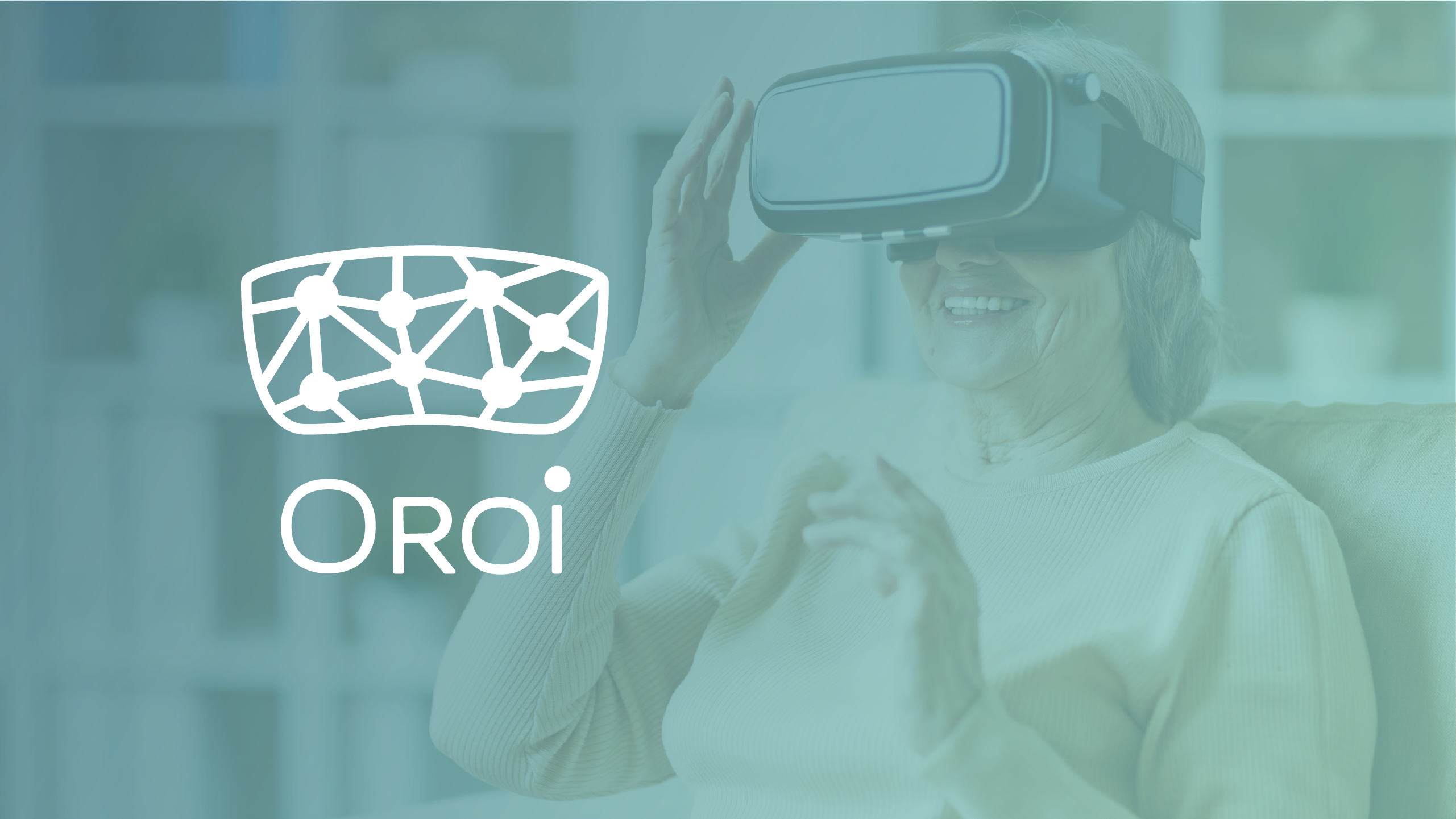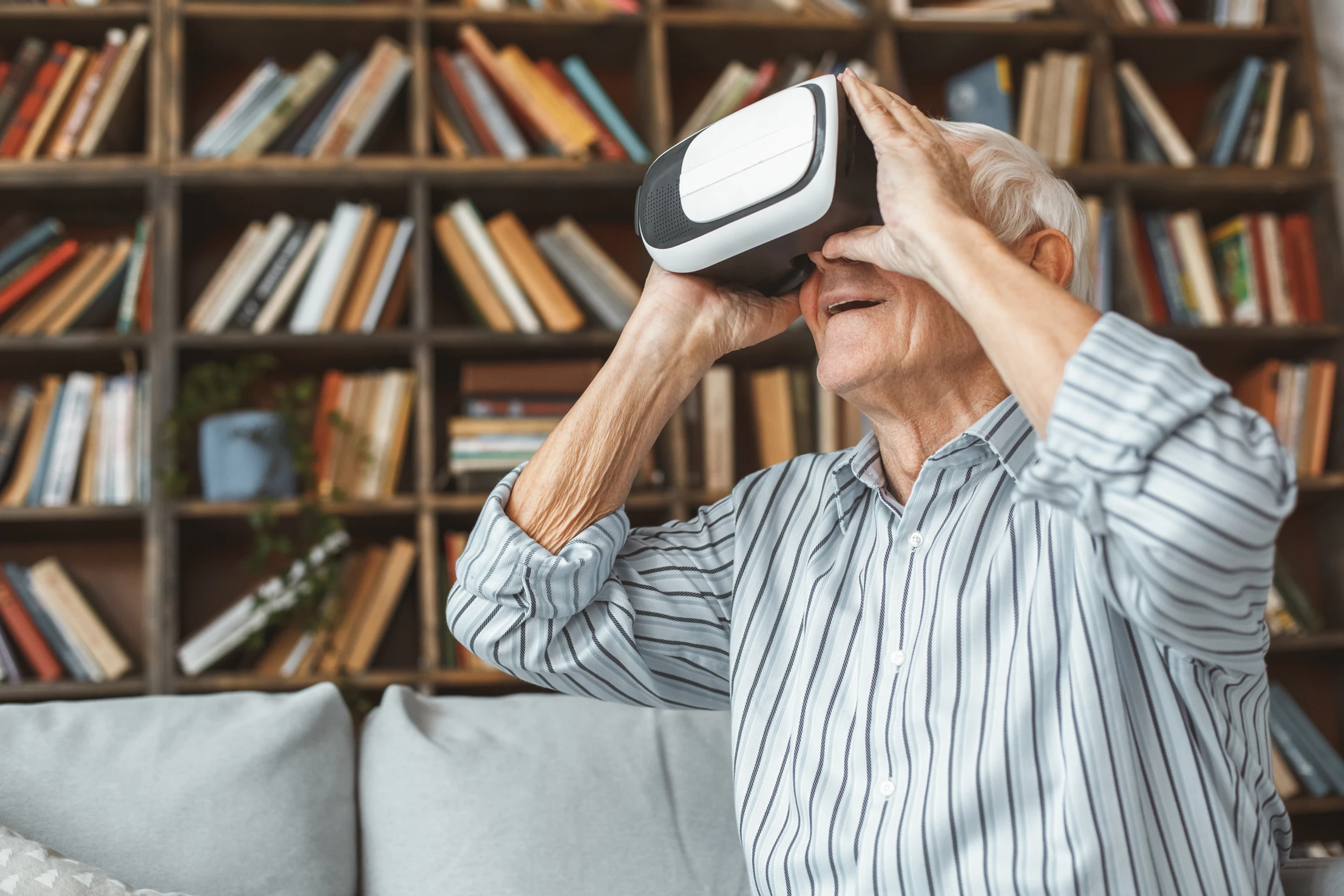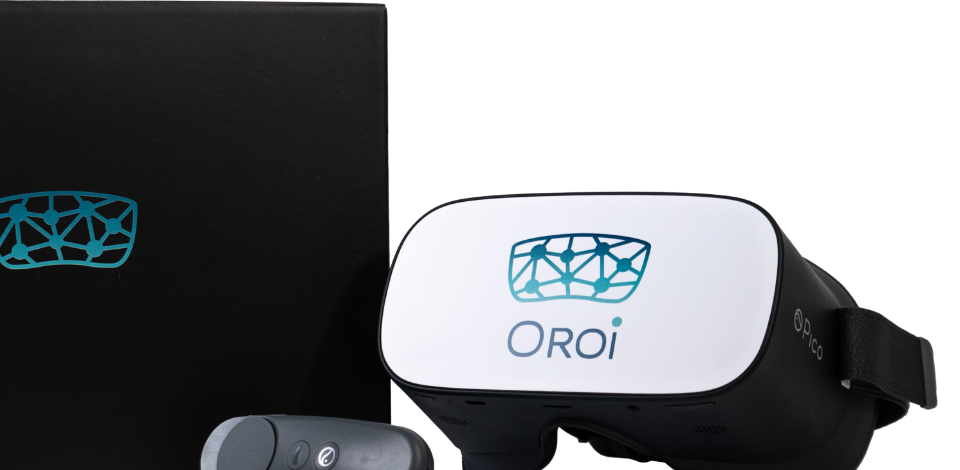News
Frequently asked questions about cognitive stimulation through Virtual Reality
Adriana Gómez - - 4 Min.
Virtual reality is a very new technology that offers many advantages for different therapies. But it is precisely because of this novelty that it is often complicated to understand how it is applied, what value it offers, whether it is well received by the patient, etc. This is why, at Oroi, we answer the most frequently asked questions about cognitive stimulation using virtual reality.
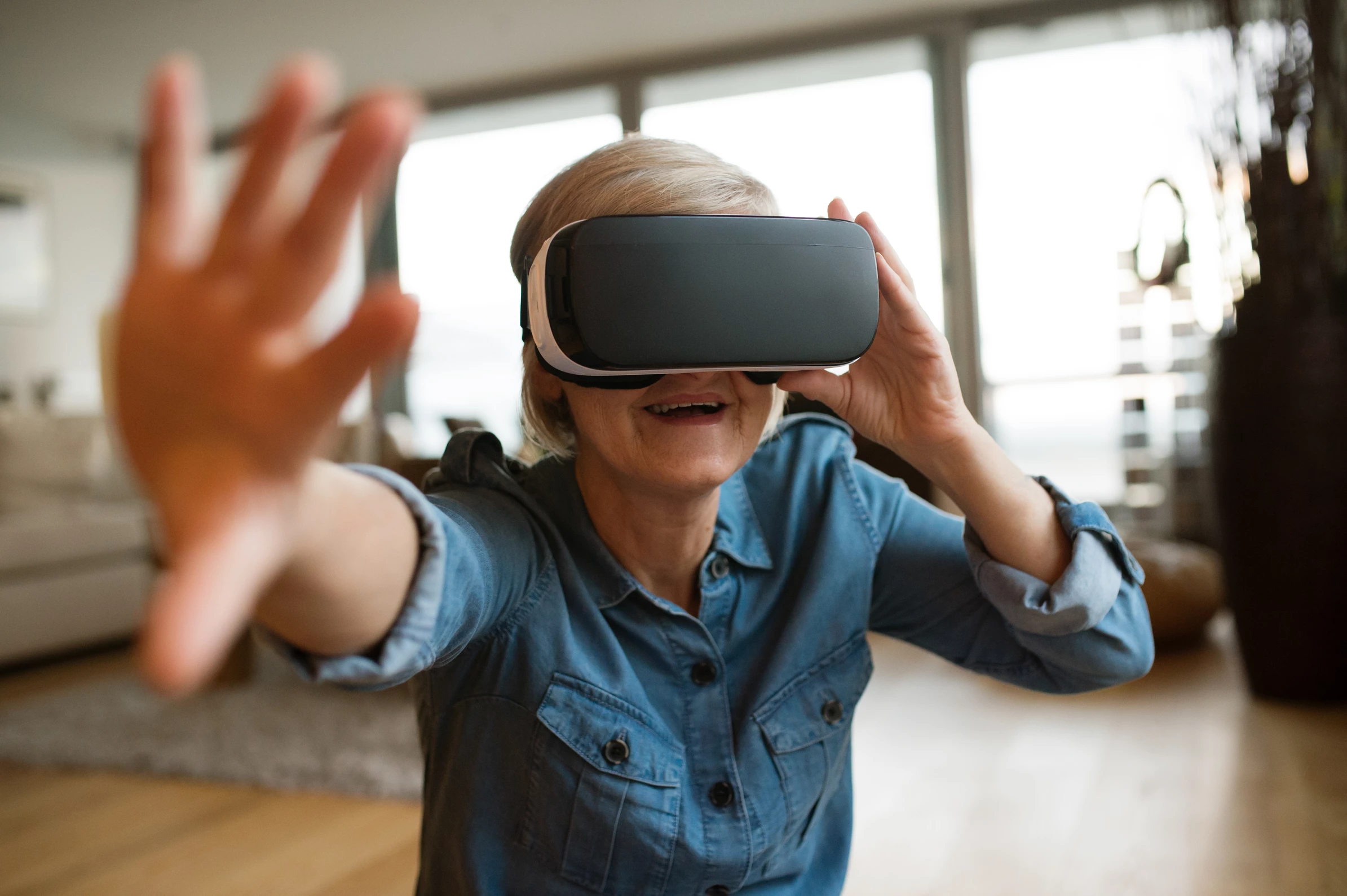
Frequently asked questions about cognitive stimulation through Virtual Reality
What is virtual reality cognitive stimulation?
When we think of Virtual Reality, we usually think of mainly entertainment contents: games, videos, etc. However, Virtual Reality has gone a step further, taking advantage of its immersive capacity to offer more efficient (shorter duration) and effective (better results) therapies.
The objective of cognitive stimulation through virtual reality is to perform activities in the same glasses, which allows us to perform exercises in a specific environment, i.e. if we want to perform an exercise in a supermarket, we would find ourselves inside the supermarket, so that the exercise becomes more real, more entertaining and the results are much more transferable to those needed for day-to-day life.
We will be able to interact with the environment: select objects, move them, place them, order them, etc. All in a specific work environment created with the aim of training a problem/situation that they will have to deal with in their daily lives.
What are the differences with other technologies such as Tablet or computer?
The main difference between a tablet or computer and VR goggles is that, when you have the goggles on, you cannot see what is happening outside the goggles, so distractions during a session are reduced.
For the same reason, the content we are working with on a computer or tablet will be less immersive and realistic.
What are the advantages of this type of therapy?
Virtual reality offers improved ecological validity [1], i.e. a higher degree of similarity between the training environment and the real world, which represents an added value for predicting an improvement in daily functioning.
On the other hand, virtual reality provides immediate feedback, which is necessary for the vast majority of learning and for successful rehabilitation [1].
In addition, it offers the possibility to personalise the environment and activities, which promotes adherence to treatment [1] and greater enjoyment during treatment [2].
Have studies been done on this?
Although the tool is very new, more than a few researchers have shown interest in it and its potential benefits, finding improvements in:
-
Memory [2, 3]: long-term [4], verbal [4] and episodic [5].
-
Attention [2, 3]: divided attention [6] and processing speed [7].
-
Executive functions [2, 3]: working memory [8], dual-tasking [6] and abstract reasoning [5].
-
Visuospatial skills [9, 10].
In addition, several studies have compared its effectiveness in relation to that of other types of therapy, finding that:
-
Cognitive rehabilitation in an ecologically valid context is more effective than conventional training [2].
-
Stimulation therapy using Virtual Reality obtains greater improvements in attention than using a computer [2].
What do users think?
The reception from users is usually surprisingly good. The novelty of the technology arouses their interest and once they have the opportunity to try it, they enjoy it enormously.
Virtual Reality is a tool applicable to all ages, although there are usually more doubts in the case of older people, but those who have had contact with it consider it to be a safe tool with an infinite number of possibilities.
Focusing on cognitive stimulation, avoiding possible distractions makes users more motivated in the activity they are doing. In addition, by proposing different activities, in attractive environments and carrying out everyday tasks, they tend to enjoy the exercise more.
References
1 Manera, V., Chapoulie, E., Bourgeois, J., Guerchouche, R., David, R., Ondrej, J., Drettatkis, G., Robert, P. (2016). A feasibility study with image-based rendered virtual reality in patients with mild cognitive impairment and dementia. Plos One 11(3): e0151487. doi: 10.1371/journal.pone.0151487
2 Faria, A.L., Andrade, A., Soares, L., Bermúdez, S. (2016). Benefits of virtual reality based cognitive rehabilitation through simulated activities of daily living: a randomized controlled trial with stroke patients. Journal of neuroengineering and rehabilitation. doi: 10.1186/s12984-016-0204-z
3 Coyle, H., Traynor, V., Solowij, N. (2015). Computerised and virtual reality cognitive training for individuals at high risk of cognitive decline: Systematic review of the literature. The American Journal of Geriatric Psychiatry, 23(4): 335-359. doi: 10.1016/j.japg.2014.04.009
4 Optale, G., Urgesi, C., Busato, V., Marin, S., Piron, L., Priftis, K., Gamberini, L., Capodieci, S., Bordin, A. (2010). Controlling memory impairment in elderly adults using virtual reality memory training: a randomized controlled pilot study. Neurorehabilitation and neural repair, 24(4): 348-357. doi: 10.1177/1545968309353328
5 Rozzini, L., Costardi, D., Chilovi, B.V., Franzoni, S., Trabucchi, M., Padovani, A. (2007). Efficacy of cognitive rehabilitation in patients with mild cognitive impairment treated with cholinesterase inhibitors. International Journal of Geriatric Psychiatry, 22(4): 356-360. doi: 10.1002/gps.1681
6 Gagnon, L.G., Belleville, S. (2012). Training of attentional control in mild cognitive impairment with executive deficits: Results from a double-blind randomized controlled study. Neuropsychological rehabilitation, 22(6), 809-835. doi: 10.1080/09602011.2012.691044
7 Valdés, E.G., O’Connor, M.L., Edwards, J.D. (2012). The effects of cognitive speed of processing training among older adults with psychometrically-defined mild cognitive impairment. Current Alzheimer Research, 9(9): 999-1009. doi: 10.2174/156720512803568984
8 Rosen, A.C., Sugiura, L., Kramer, J.H., Whitfield-Gabrieli, S., Gabrieli, J.D. (2011). Cognitive Training Changes Hippocampal Function in Mild Cognitive Impairment: A pilot study. Journal of Alzheimer’s disease, 26(3): 349-357. doi: 10.3233/jad-2011-0009
9 White, P.J.F., Moussavi, Z. (2016). Neurocognitive treatment for a patient with Alzheimer’s disease using a virtual reality navigational environment. Journal of Experimental Neuroscience, 10: 129-135. doi: 10.4137/JEN.S40827
10 Barnes, D.E., Yaffe, K., Belfor, N., Jagust, W.J., DeCarli, C., Reed, B.R. y Kramer, J.H. (2009). Computer-based cognitive training for mild cognitive impairment. Alzheimer disease & Associated Disorders, 23(3): 205-210. doi: 10.1097/wad.0b013e31819c6137
11 Kandalaft, M.R., Didehbani, N., Krawczyk, D.C., Allen, T.T., Chapman, S.B. (2013). Virtual reality social cognition training for young adults with high-functioning autism. Journal of Autism and Developmental Disorders, 43(1): 34-44.

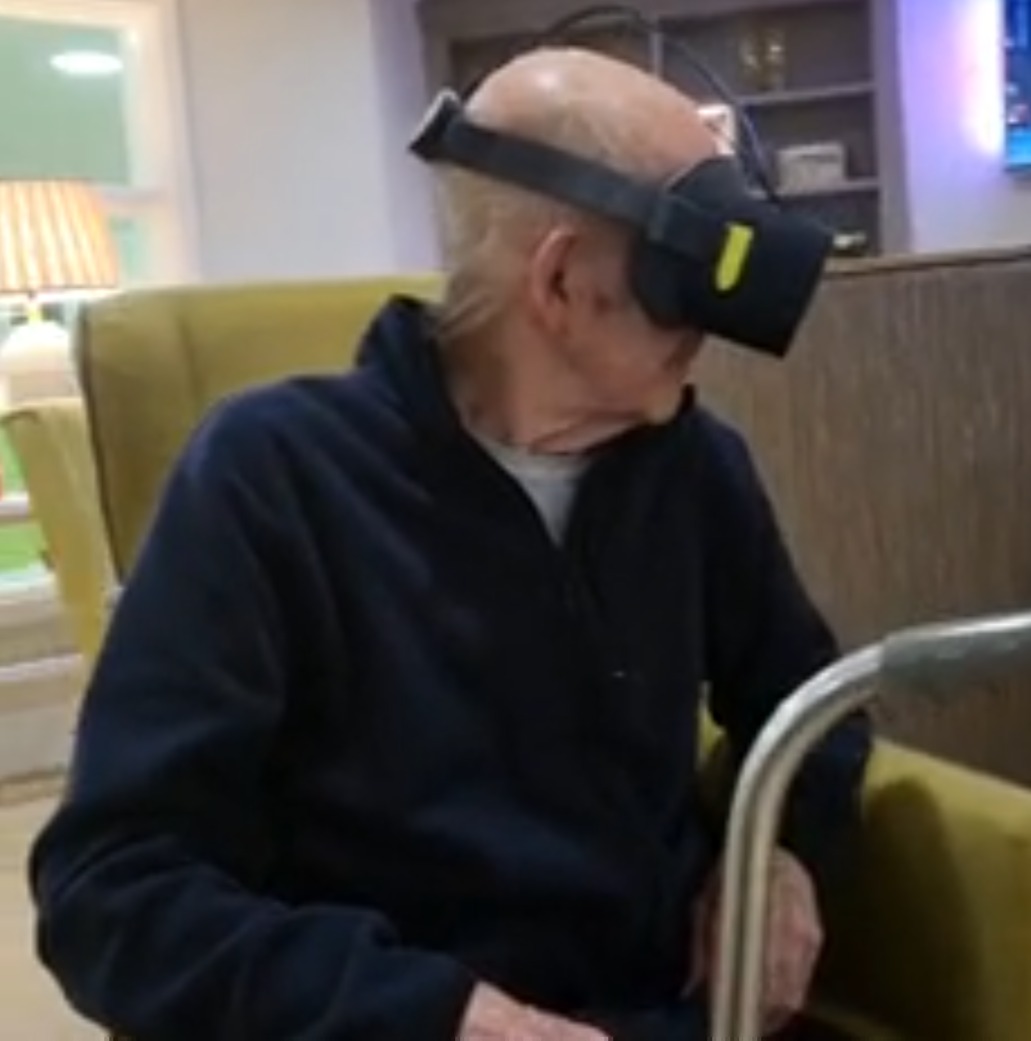
News
Retired ship engineer Ian rekindles his love of the sea during a virtual reality tour with Oroi

News
VR Elderly care Company, OROI, Appoints Linda Hypky as Marketing and Sales Manager in Germany

News
Its use started with computer games and is now an important part of the medicine and care sector- VR

